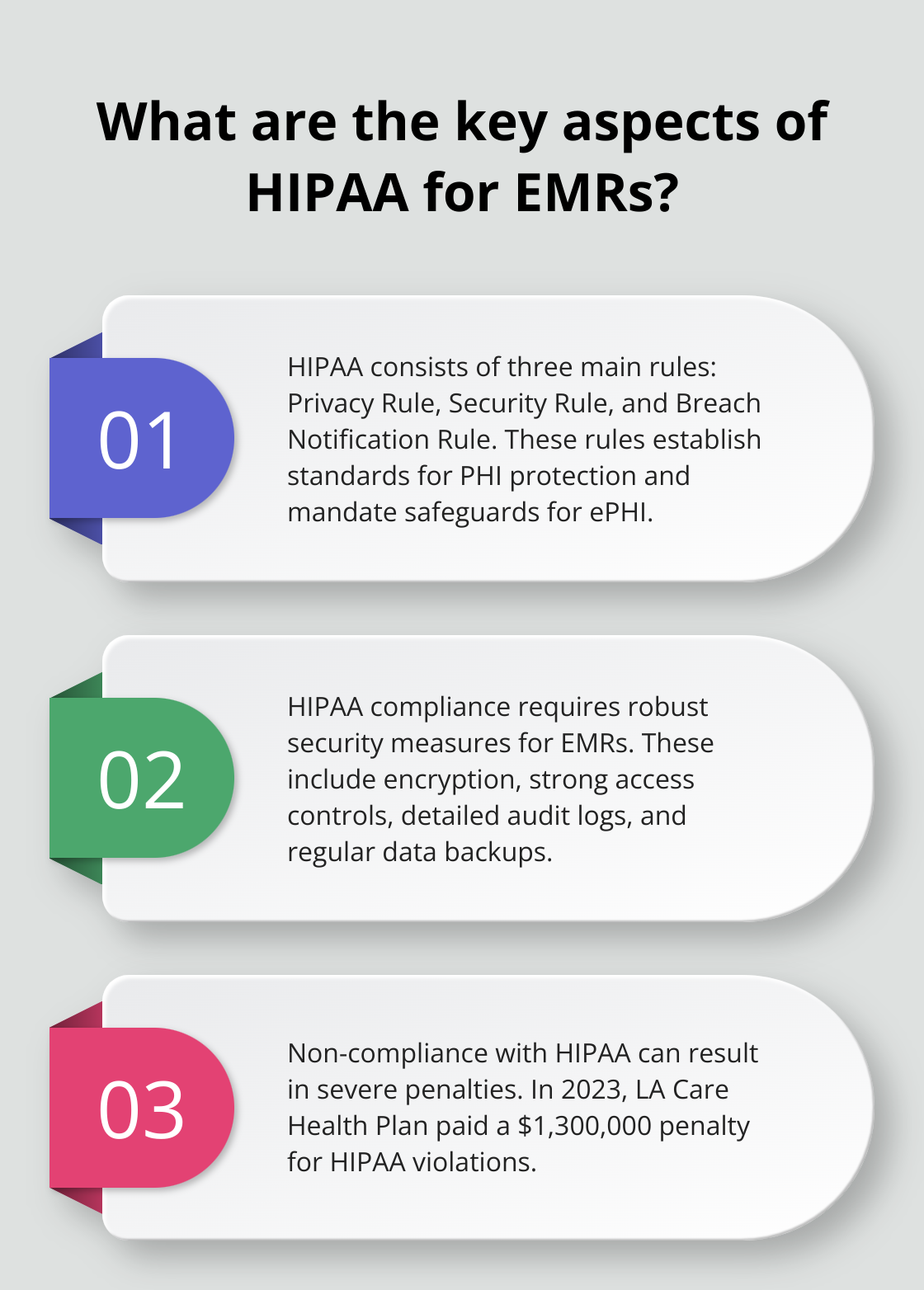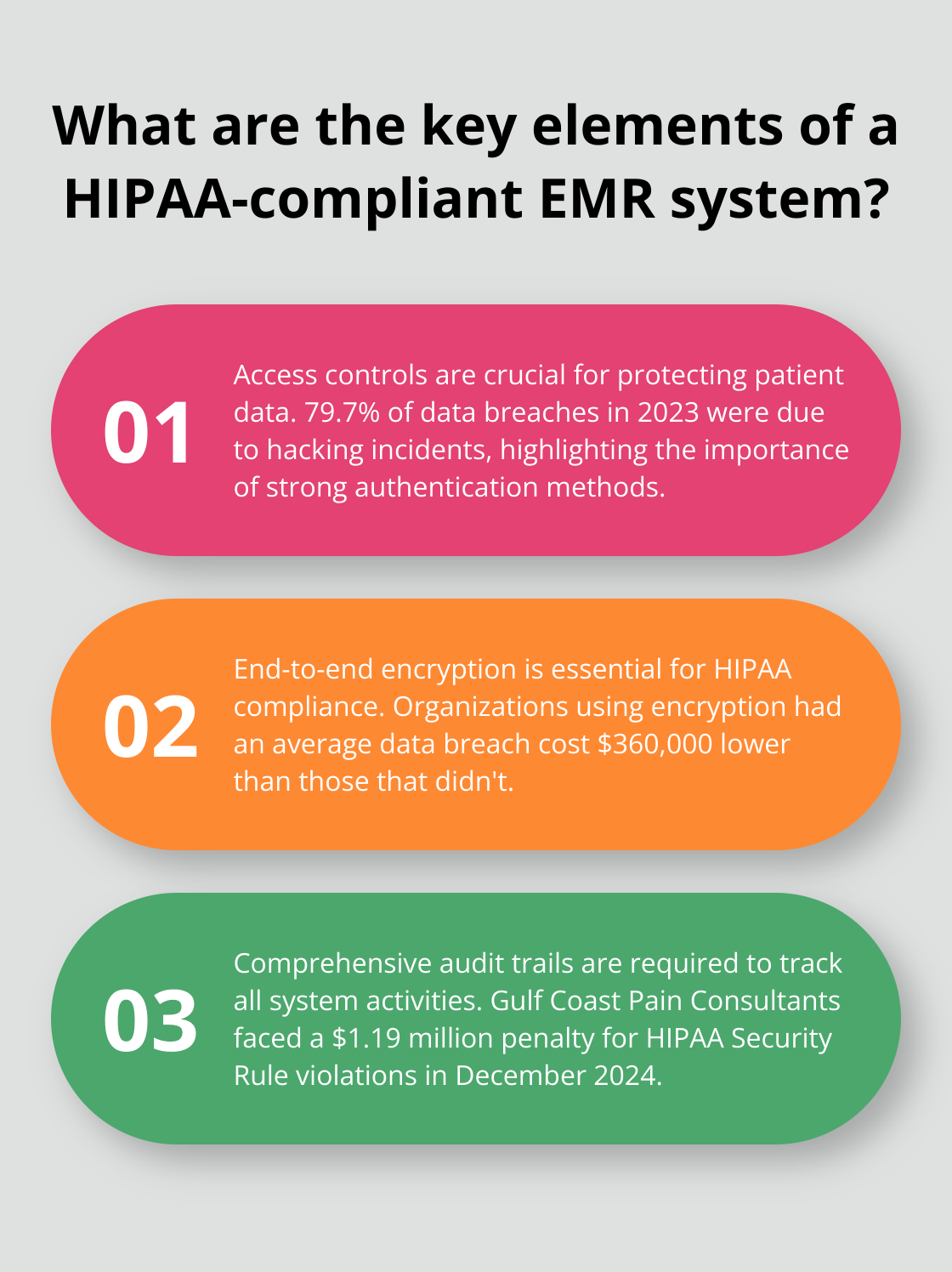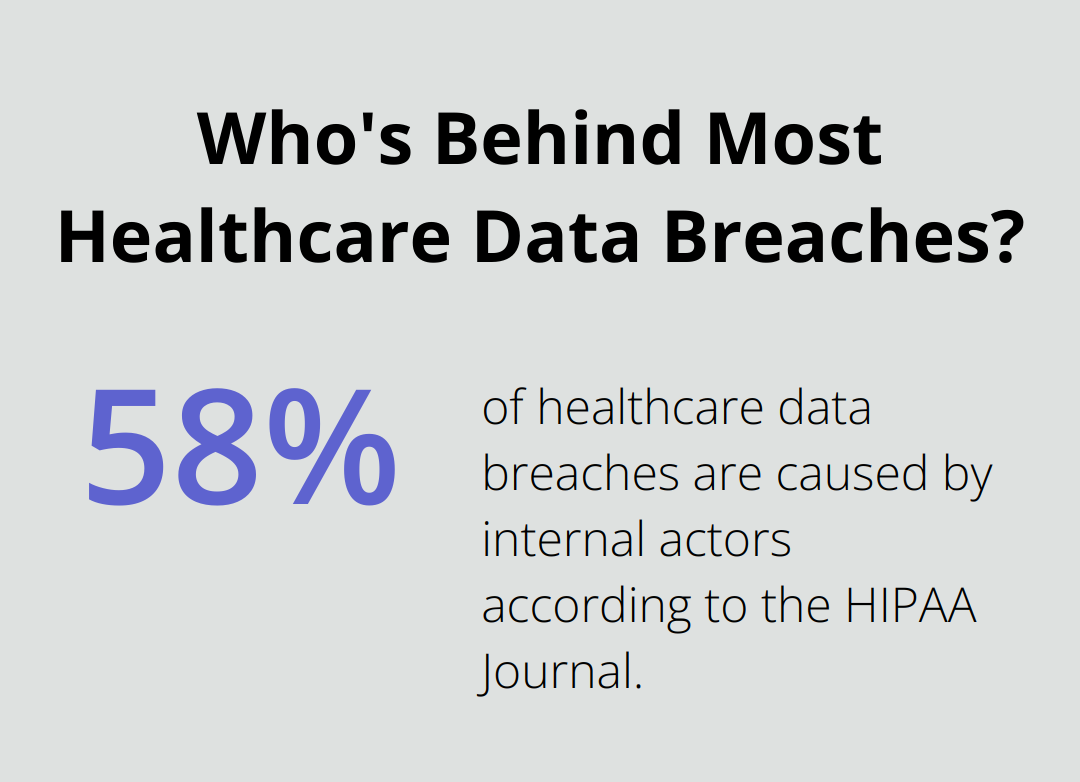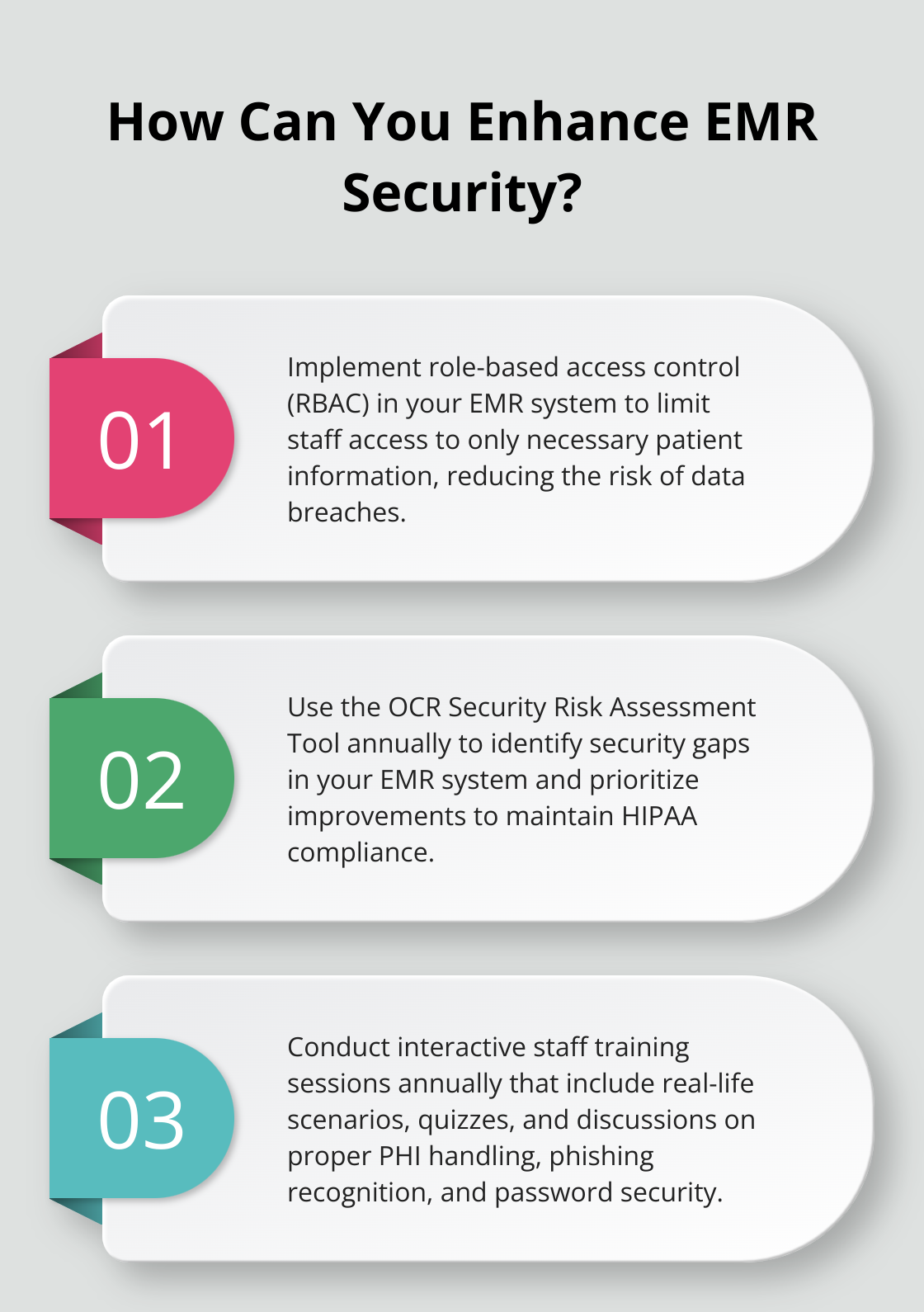EMR HIPAA compliance is a critical aspect of modern healthcare. At ScriberJoy, we understand the importance of protecting patient data while leveraging the benefits of electronic medical records.
This EMR HIPAA compliance checklist will guide you through the essential steps to ensure your system meets all necessary requirements. We’ll explore the key components of HIPAA and provide practical advice for maintaining compliance in your healthcare organization.
What is HIPAA and Why Does It Matter for EMRs?
HIPAA, the Health Insurance Portability and Accountability Act, forms the foundation of patient data protection in the United States. For healthcare providers using Electronic Medical Records (EMRs), HIPAA compliance is not just a legal requirement-it’s essential for maintaining patient trust and avoiding severe penalties.
The Three Pillars of HIPAA
HIPAA consists of three main rules that directly impact EMR systems:
- The Privacy Rule: This rule establishes standards for the use and disclosure of Protected Health Information (PHI). It grants patients rights over their health information and requires healthcare providers to implement safeguards.
- The Security Rule: Focusing specifically on electronic PHI (ePHI), this rule mandates administrative, physical, and technical safeguards to ensure the confidentiality, integrity, and availability of ePHI.
- The Breach Notification Rule: This rule requires healthcare providers to notify patients, the Department of Health and Human Services (HHS), and in some cases, the media, when a breach of unsecured PHI occurs.
HIPAA’s Impact on EMRs
For EMR systems, HIPAA compliance requires the implementation of robust security measures, including:
- Encryption of data (both at rest and in transit)
- Strong access controls and user authentication
- Detailed audit logs of all system activities
- Regular data backups and testing of recovery procedures

In 2023, 79.7% of data breaches were due to hacking incidents. This statistic highlights the critical importance of rigorous HIPAA compliance for EMR systems.
The Cost of Non-Compliance
HIPAA violations can result in severe penalties. In 2023, LA Care Health Plan agreed to pay a $1,300,000 penalty for HIPAA violations. For small practices, even a single violation can prove financially devastating.
To avoid such outcomes, healthcare providers must ensure their EMR systems fully comply with HIPAA regulations. This involves not only the implementation of technical safeguards but also staff training, development of comprehensive policies and procedures, and regular assessment and updating of security measures.
Choosing a HIPAA-Compliant EMR System
When selecting an EMR system, healthcare providers should prioritize HIPAA compliance. Look for systems that offer:
- Built-in security features (e.g., encryption, access controls)
- Regular updates to address new security threats
- Comprehensive audit trail capabilities
- Secure backup and recovery options
Some EMR providers (like ScribeJoy) design their systems with HIPAA requirements at the core, helping healthcare providers focus on patient care without worrying about data security.
As we move forward, let’s examine the essential elements that make up a HIPAA-compliant EMR system in more detail.
Essential Elements of a HIPAA-Compliant EMR System
A HIPAA-compliant Electronic Medical Record (EMR) system forms the cornerstone of secure healthcare data management. Such a system must incorporate robust security measures to protect patient information. Let’s explore the key elements that make an EMR system truly HIPAA-compliant.
Robust Access Controls
Access controls serve as the first line of defense in protecting patient data. A HIPAA-compliant EMR system must implement strong user authentication methods. This includes unique user IDs, complex passwords, and multi-factor authentication. A 2023 report by the HIPAA Journal revealed that 79.7% of data breaches were due to hacking incidents. Implementing role-based access control (RBAC) can significantly reduce this risk by limiting staff members’ access to only the information necessary for their job functions.
End-to-End Encryption
Encryption is a non-negotiable aspect of HIPAA compliance. Your EMR system should encrypt data both at rest and in transit. This involves using industry-standard encryption protocols (such as AES-256 for stored data and TLS 1.2 or higher for data transmission). A study by the Ponemon Institute found that organizations using encryption had an average data breach cost $360,000 lower than those that didn’t.
Comprehensive Audit Trails
HIPAA requires detailed logging of all activities within an EMR system. This includes tracking who accessed what information, when, and what changes were made. These audit trails play a vital role in detecting unauthorized access and demonstrating compliance during audits. The Office for Civil Rights (OCR) has issued several fines for HIPAA violations, including a $1.19 million penalty against Gulf Coast Pain Consultants for HIPAA Security Rule violations in December 2024.
Secure Backup and Recovery
Data loss can prove catastrophic for healthcare providers. A HIPAA-compliant EMR system must include regular, secure backups and a tested recovery plan. The National Cyber Security Centre recommends the 3-2-1 backup rule: keep at least three copies of your data, store two backup copies on different storage media, and keep one backup copy offsite.
Vendor Management
If your EMR system involves third-party vendors, you must have Business Associate Agreements (BAAs) in place. These legally binding contracts ensure that your vendors maintain HIPAA compliance when handling patient data. The OCR has emphasized the importance of BAAs, with penalties for non-compliance reaching up to $1.55 million in some cases.

Implementing these essential elements in your EMR system is vital for HIPAA compliance. However, compliance is an ongoing process, not a one-time achievement. The next section will outline the steps you need to take to ensure your EMR system remains HIPAA compliant over time.
How to Achieve and Maintain HIPAA Compliance for Your EMR
Perform a Comprehensive Risk Assessment
Start with a thorough risk assessment of your EMR system. The U.S. Department of Health and Human Services recommends annual risk assessments. In 2023, hacking attacks caused 67.3% of healthcare data breaches (according to Bitglass). Your risk assessment should identify system vulnerabilities, evaluate potential threats, and determine the likelihood and impact of security incidents.

Use the OCR Security Risk Assessment Tool, designed for small to medium-sized healthcare providers. This free resource helps you identify security practice gaps and prioritize improvements.
Implement Multi-Layered Security Measures
After risk identification, implement robust security measures. Employ robust encryption methods to protect patient data from unauthorized access during transmission and storage. Include technical safeguards like access controls and audit logs. Physical safeguards matter too – secure your servers, implement proper disposal methods for PHI-containing devices, and control physical access to PHI storage or access areas.
Don’t neglect administrative safeguards. Develop clear policies for data access, use, and disclosure. Implement a sanctions policy for HIPAA rule violations. Comprehensive security measures cost far less than breach management.
Provide Regular Staff Training
Your staff forms the first line of defense against HIPAA violations. The HIPAA Journal reports that internal actors cause 58% of healthcare data breaches. Conduct annual training sessions covering proper PHI handling, phishing attempt recognition, and strong password importance.
Try interactive training methods. The training incorporates real-life scenarios, quizzes, and discussions to make the learning experience more effective and engaging.
Establish Continuous Monitoring and Auditing
Set up continuous monitoring of your EMR system to maintain HIPAA compliance. Implement real-time alerts for suspicious activities, review access logs regularly, and conduct periodic internal audits. The OCR recommends automated tools for continuous monitoring to quickly identify and respond to potential security incidents.
HIPAA compliance requires ongoing effort and adaptation to new threats and regulations. These steps will help you reduce HIPAA violation risks and protect sensitive patient information. When dealing with patient data, it’s crucial to ensure accurate transcription of medical records to maintain compliance and data integrity.
Final Thoughts
HIPAA compliance for EMR systems requires constant vigilance and effort. Healthcare providers must implement robust security measures, conduct regular risk assessments, and train staff to protect patient data effectively. Our EMR HIPAA compliance checklist serves as a valuable tool to navigate these complex requirements and safeguard sensitive information.

HIPAA-compliant EMR systems offer benefits beyond regulatory adherence. They enhance patient trust, improve data integrity, and streamline healthcare operations. Healthcare providers should prioritize HIPAA compliance when selecting and maintaining their EMR systems to ensure the highest standards of data protection.
At ScriberJoy, we understand the importance of HIPAA compliance in medical documentation. Our medical transcription software supports healthcare providers in maintaining accurate and secure medical records. We encourage healthcare organizations to stay proactive in their compliance efforts and leverage tools that align with HIPAA standards.

Leave a Reply
You must be logged in to post a comment.